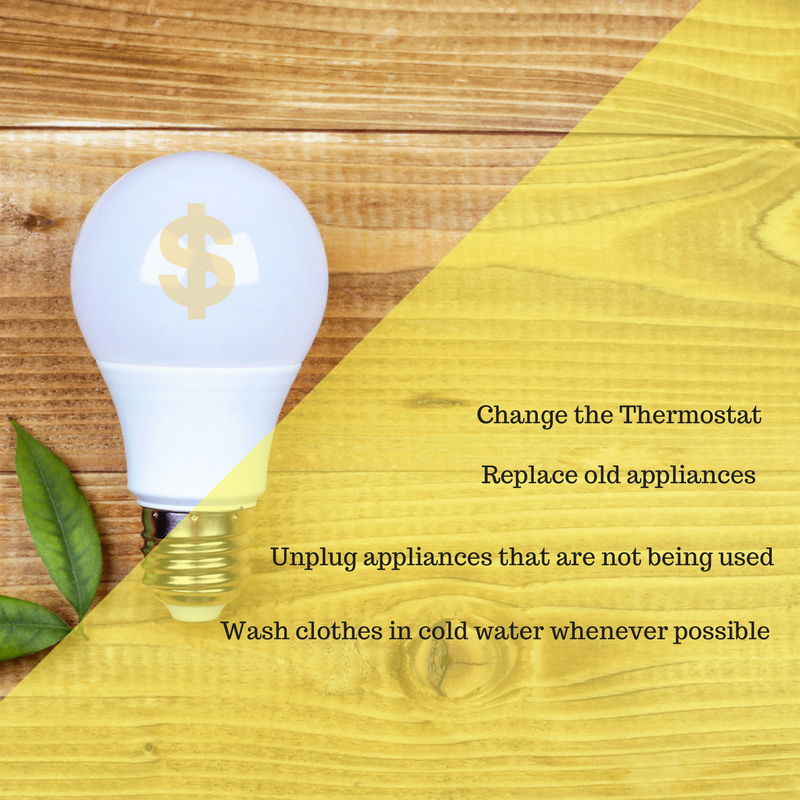10 Tips to Save on Energy Costs
Posted by Eric Skates on
Winter marks the last season of the year. With its chilly mornings and colder nights, wintertime lands a devastating blow to many a budget.
Planning ahead for grocery expenses and home updates are simple, but saving on utility costs is not as straight forward.
Electricity and natural gas are the most common sources of energy in a home. The amount of energy required from day-to-day fluctuates. Conserving energy is simple with these ten energy-saving hacks:

1. Change the Thermostat. Layering on some warm clothing and keeping the thermostat set to 68 degrees Fahrenheit gives the best energy savings. Each degree above 68 adds 10% to heat bill.
2. Lower water heater thermostat to 120 degrees Fahrenheit. Dishwashers, bathtubs, showers, clothes washer, and sinks all have one thing in common, the water heater. The water heater works hard to supply the whole house with warm water. Lowering the water heater's thermostat to 120 degrees eases the workload. Each 10 degree reductions saves an average of $15.
3. Unplug appliances that are not being used. Many appliances continue to draw electricity when off or idling. Unplugging each appliance can get tedious. The simplest solution is to use power strips with on and off switches. Simply turn off the power strip and all the appliances plugged into it immediately stop using energy.
4. Close off unused rooms. Large houses usually have at least one room that is not used on a regular basis. When the vents are left open, the furnace and air conditioner use up energy to heat and cool that unused space. Closing vents and doors in a part of the house that is not used everyday prevents wasteful energy consumption.
5. Replace old appliances. Vintage refrigerators are cute but not very energy-efficient. The same goes for older washing machines, dishwashers, and dryers. Newer models are given energy star ratings based on how efficiently they conserve energy.
6. Change furnace air filters every 3 months. This is a common mistake. Once installed, it's easy to forget about the filter entirely. As the furnace continues to push air through the filter, it collects dust and particles. These particles continue to build up until air can barely squeeze through. Dirty filters slow air flow and cause the system to draw more energy.
7. Insulate hot water pipes. It takes a while for hot water to travel through cold pipes. The hot water leaves the heater and cools off quickly. As hot water passes through the pipes, heat moves from the water to the chilly pipes. Insulating hot water pipes raise the water temp two to four degrees. The water heater no longer must work as hard to provide hot water.
8. Put the computer to sleep instead of running the screen saver. Screen savers are fun ways to show off a slide-show of pictures, but they use up energy. The computer is still running. A good alternative is to let the computer hibernate or put it to sleep between uses. This saves an estimated $30 a year.
9. Hang laundry to dry. Dryers use a lot of energy to simply dry laundry, and on top of sucking up energy, dryers are hard on clothes. Hanging clothes to dry on a rack or line saves energy. The environment does all the work. Plus, air-dried clothes last longer.
10. Wash clothes in cold water whenever possible. Clothes washers are wonderful labor-saving devices. A tub filled with clothes and detergent fills with water and agitates the clothes till they are clean. When using warm or hot cycles, the water heater must supply a large amount of hot water to the washer to fill the tub. Switching to a cold cycle saves energy.
Conserving energy usage comes down to making a few new habits.
A change here and there are all it takes to control energy usage.
Whether it's the middle of winter or the most sweltering day of summer, making plans for energy conservation is always wise.



